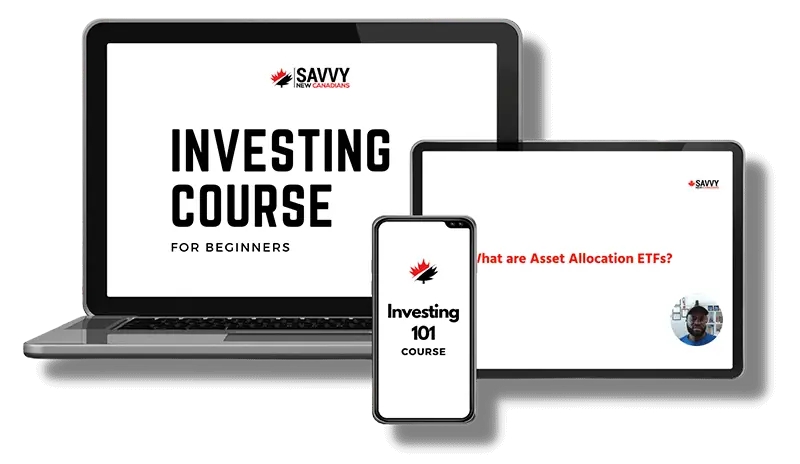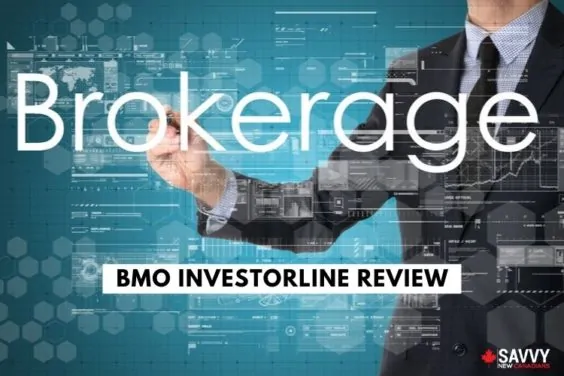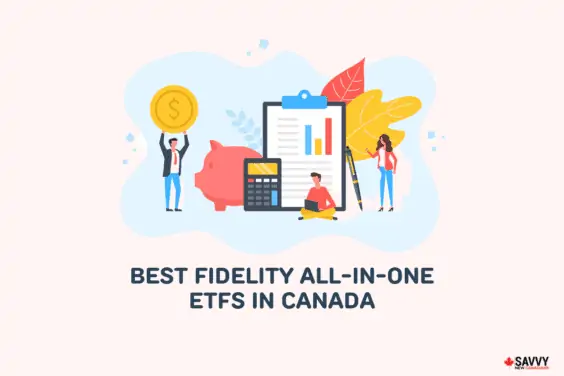When the stock market is volatile, Canadian investors turn to fixed-income investments to protect their money.
GICs and Bonds are both safe, low-risk investments that provide steady returns. Both instruments also return the principle you initially invested at the end of the term.
This article will compare and contrast GICs and bonds and help you determine if these assets fit into your investment strategy.
GIC Overview
A GIC or Guaranteed Investment Certificate is a fixed-income instrument that can be purchased from most financial institutions in Canada. These certificates provide a guaranteed return on investment.
You can think of a GIC as a loan for which you are being paid interest over a set period of time. At the end of that term, you will receive back the initial principle that you invested plus interest.
There are several types of GICs that Canadians can purchase in both registered and non-registered accounts. When most people think of GICs, they usually think about non-redeemable certificates. These are GICs that must be held until the end of the term, also known as the maturity date.
Here are a few other GICs for Canadian investors:
Redeemable GICs
If you want some flexibility or anticipate needing your money earlier, you can consider a non-redeemable GIC. These certificates can be redeemed at any time before the redemption date.
What’s the catch? Some financial institutions will issue penalties for early redemptions of GICs. As well, redeemable GICs have lower interest rates than non-redeemable GICs.
Short-Term GICs
Short-term GICs are usually for less than 1 year, with the shortest starting in as little as 30 days. These are also helpful if you think you might need your funds in the near future.
Short-term GICs can come in redeemable or non-redeemable certificates. With GICs, the shorter the time to redemption, the lower the interest rate is.
Long-Term GICs
Long-Term GICs are for periods of longer than 1 year and up to 10 years. Long-term GICs offer some of the highest interest rates in Canada.
Remember that once a non-redeemable GIC is locked in, you cannot redeem it early if interest rates rise due to factors like inflation.
Market-Linked GICs
Market-linked GICs are linked to the equities market and have the potential to provide a higher return than a regular GIC. How is this possible? The interest rate for market-linked GICs is based on the performance of an underlying stock index.
If this index performs well, your interest rate will rise, and you could see an outsized return. But if the market falls, you could see minimal gains, or sometimes, none at all.
Bond Overview
A bond is another fixed-income asset that is issued by a government or corporation to raise money. Like GICs, bonds are loans from which you earn interest payments and receive your initial investment back at the end of the term.
One difference with bonds is they can be traded like stocks. This provides the opportunity for potential capital appreciation or losses, depending on how your trades do.
In Canada, there are several different bonds you can buy in both registered and non-registered accounts.
Government Bonds
Government bonds are considered some of the safest investments in Canada because they are 100% backed by the Canadian government.
These bonds can be held for various term lengths, and the interest rate is determined by the bond yields issued by the Bank of Canada. There are also Provincial and Municipal government bonds that you can buy as well.
Corporate Bonds
Corporate bonds are issued by companies that are raising capital for their business. These are riskier than government bonds because a company can always go bankrupt and default.
In exchange for a lower credit rating, corporate bonds tend to pay out a higher interest rate than other bonds.
Junk Bonds
Also known as high-yield bonds, these bonds have a higher likelihood of losses despite the much higher yield.
These bonds have a much lower credit rating than government or corporate bonds, hence the name junk.
Convertible Bonds
These bonds are not as commonly bought by retail investors but are available in Canada. These bonds are issued by corporations. At the end of the bond term, these can be converted into common shares of the company’s stock.
Foreign Bonds
You can buy bonds from other countries if you wish to do so. Many Canadians buy bonds issued by the governments of countries with strong economies, such as the United States. These bonds will pay you in foreign currency.
Bond ETFs
If you have difficulty choosing a bond, you can always invest in a basket of them through a bond ETF. These funds hold thousands of different bonds and trade on major stock exchanges.
The main difference with a bond ETF is that you do not get your face value investment back, the fund manager just continues to buy new bonds, and you receive a regular monthly distribution.
GICs vs. Bonds: Differences
Fixed Term vs. Early Redemption
While bonds and GICs are similar, bonds offer more flexibility for early redemption. You could potentially lose some of the face value of your initial investment though, so be wary of selling your bonds before the maturity date.
Interest Rates vs Bond Yields
Both bonds and GICs provide an interest rate of return on your investment. Bond yields are heavily influenced by the treasury yields issued by the Bank of Canada. GIC rates are determined by the prime rate from the Bank of Canada.
GICs vs. Bonds: Similarities
Both Are Financial IOUs
When you buy a GIC or a bond, it is essentially an IOU to the issuer of the instrument. Both have a predetermined date at which you receive back the face value of your initial investment, plus any interest earned along the way.
Both Are Low-Risk Fixed-Income Investments
Both GICs and bonds are considered very safe investments. There is little risk of losing any money when you invest in these fixed-income assets, but of course, there is much less upside compared to stocks.
Pros and Cons of GICs
GICs are guaranteed, and nothing can change that aside from an early redemption. There is no risk of losing money when you invest in GICs (other than financial institution bankruptcy if your deposit amount exceeds the insurance protection offered by the Canada Deposit Insurance Corporation).
They also provide a solid return when interest rates are higher and provide a hedge against volatility in the stock market.
The downside to GICs is that most of them are locked in aside from a redeemable GIC. The returns are lower than with other assets and have the potential to fall behind the rate of inflation.
Pros and Cons of Bonds
Bonds also offer security and a guaranteed rate of return like GICs. They offer a bit more flexibility than GICs, with the ability to sell them before the maturity date.
Historically, bonds have provided higher yields and more capital appreciation than GICs. They are also considered a long-term investment strategy that can have a permanent place in your portfolio. GICs are often seen as transitory investments while the markets are volatile.
Bonds can lose value if the bond yields are volatile. They can also underperform other long-term assets like stocks and ETFs. Bonds are also less guaranteed than GICs as you can chase higher yields with lower quality bonds that have the risk of default.
GICs vs Bonds: Which is The Better Investment?
GICs and bonds are often lumped together, but they do serve different purposes in your portfolio. Bonds can be a sustainable, long-term investment strategy that many retirees in Canada rely on for steady income. GICs are often treated as transitory and are more of an investment to park your money in temporarily.
Both of these assets can be used at different times or together. The better investment is the one that suits your current situation. If you want zero risk and think you might need access to these funds sooner rather than later, then look at GICs.
If you want a long-term steady stream of income without the stress of the stock market, look at bonds.
How To Invest in GICs and Bonds
All of the big bank brokerages in Canada will allow you to invest in both GICs and bonds. If you want to save on commissions, some Canadian discount brokerages offer fixed-income assets.
Questrade offers zero-commission trading for bonds and GICs, while Wealthsimple does not offer either as of now. Some brokerages will require a minimum investment for bonds and GICs.
Questrade

Trade stocks, ETFs, options, FX, bonds, CFDs, mutual funds, etc.
Get $50 trade credit with $1,000 funding
Low and competitive trading fees
No quarterly inactivity fees
Access to advanced tools and trading data
Top platform for advanced traders
Transfer fees waived
GICs vs Bonds vs Mutual Funds
While GICs and bonds are fixed-income assets, mutual funds are baskets of assets that pool investor money together. They are actively managed by fund managers at financial institutions and investment management companies. In exchange, investors pay an MER or Management Expense Ratio for their services.
Mutual funds can hold a variety of assets, including stocks and bonds. These funds do not trade on stock exchanges like ETFs, so they cannot be traded during regular market hours.
Canadian investors can own mutual funds in both registered and non-registered accounts.
Related: GIC vs Mutual Funds






